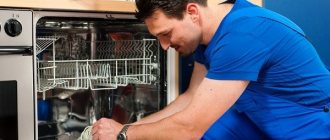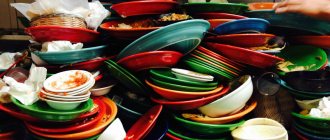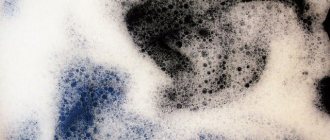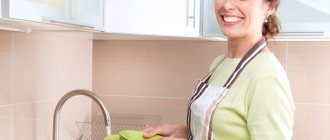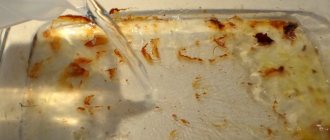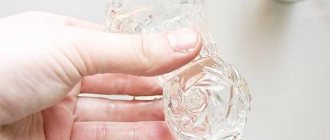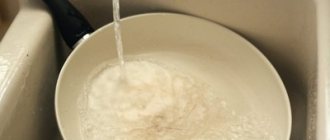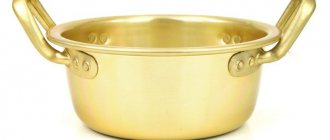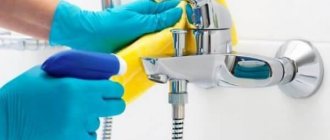Pots and pans are the main arsenal of any housewife who loves and knows how to cook. Their cleaning becomes a guarantee of long-term use of kitchenware. There are many ways to shine the surface of household utensils. This effect is easy to achieve if you use glue and soda to clean the pans.
Many housewives resort to the help of improvised means when they need to remove dirt from the surface of the dishes.
What you need to know when cleaning dishes with office glue
The method is quite simple to perform, but you should be aware of some nuances and do not forget about safety rules.
The cleaning method using glue is not suitable for cookware with a non-stick coating, since it is damaged when exposed to an alkaline environment. The plastic parts of the cookware should be unscrewed before cleaning.
Work should be performed with rubber gloves for safety.
Shiny finishes will fade when using baking soda, so it is not recommended to wash them using this method.
Subscribe to our Social networks
Rules of care
Many interior items and tableware are made from crystal. These include chandeliers, lamps, dishes, salad bowls, glasses, wine glasses and decorations. During their use, yellow and white spots appear, the products become covered with dust and grease.
Carved crystal has unique patterns, grooves and curves. Various colors and jewels are used to create it. A lot of dirt accumulates in carvings or patterns, which can only be removed with deep cleansing.
If you do not pay attention to the care of your crystal, an unsightly white coating and grease will form on it, which is quite difficult to remove. To ensure that washing your products is always a simple process, it is recommended that you properly care for them regularly.
It is important to take into account the advice of experts:
- Deep glasses with a thin stem are considered the most fragile, so when washing they should only be held by the bottom to prevent breakage;
- The dishes are washed in a deep container, at the bottom of which a soft rag is placed;
- only cool water is used, as hot water leads to cracks and clouding of the crystal;
- when using hard brushes or powders, glass is easily scratched;
- if the product has deep patterns and carvings, they can be easily cleaned with a toothbrush, but it should have soft bristles;
- tap water is hard, it leaves white spots with streaks on the glass, so you need to wait until the water drains, after which the product is wiped with a paper napkin;
- It is not allowed to stack dishes on top of each other, so all elements are stored at an optimal distance;
- You cannot use crystal products to store cold or hot drinks or food;
- Do not store dishes in rooms where the temperature changes sharply.
Only careful handling of crystal utensils will keep it in excellent condition for a long time. If you do not provide it with good care, the crystal will quickly darken and lose its attractiveness. This problem can only be dealt with through long and thorough cleaning.
Why is office glue used to remove carbon deposits?
The use of glue as a cleaning agent for pots and pans was invented several decades ago. In those days, housewives did not have such a huge selection of household chemicals, so to remove strong contaminants, various auxiliary substances were used, which were intended for completely different purposes. Today, this method is still popular, since the composition of office glue has remained virtually unchanged over the years.
Previously, office glue was produced in a standard transparent tube and had a characteristic yellow color. Nowadays, this term includes several types of products:
- silicate glue (liquid glass);
- PVA glue;
- glue stick.
Silicate glue is an aqueous alkaline solution of sodium or potassium silicates and is used in a wide variety of applications. In office supply stores it is sold in small tubes and is intended for gluing paper and cardboard. Different types of stationery glue differ in composition, thickness, color, and release form - for example, it can be produced in the form of a hard pencil.
Recipe options
On the Internet you can find many variations of the recipe described above. Not all of them are equally effective, and some are completely useless:
- A solution consisting only of water and glue dissolves fats worse than one that includes all the ingredients. And replacing silicate glue with regular PVA is completely meaningless and negates the housewife’s efforts to put the dishes in order.
- Excluding laundry soap from the solution makes cleaning heavily soiled utensils more difficult.
- The use of sodium bicarbonate (regular soda, which is used in cooking) instead of sodium carbonate (soda ash) reduces the alkalinity of the solution, which also interferes with the normal softening of carbon deposits.
- But the most terrible mistake arises as a result of the similarity of the names of soda ash and caustic soda. The latter is caustic technical soda. The substance belongs to the second hazard class according to GOST 12.1.007. Caustic soda causes chemical burns upon contact with skin and severe corrosion of metals upon prolonged contact.
For which dishes is this method not suitable?
Not all pots and pans can be cleaned by boiling them in a glue solution.
You should look for another solution for dishes that:
- has non-removable handles with wood inserts - it will swell from water and the varnish coating will fall off. The situation is similar with bone knobs on handles and lids - they will become rough and ugly;
- should be shiny. After cleaning, you will have to spend a lot of time grinding the metal so that the surface becomes mirror-like again;
- covered with a non-stick layer (including Teflon) - boiling in alkali will lead to the loss of its basic qualities, and food will begin to stick to the bottom, even if frying in a huge amount of oil.
Aluminum utensils tolerate alkali treatment well, but lose the oxide film that protects the metal from destruction. Over time, it will recover from contact with air, but it is better, without waiting for this, to boil the dishes in clean water for several minutes.
But before you start cleaning an old cast iron cauldron or frying pan, you should think about it. The black layer on them is not carbon deposits, but a natural non-stick coating that has been formed over the years. The solution will corrode it in a matter of minutes, but it will take at least six months to restore it. In addition, cast iron will rust heavily after contact with alkali.
So, washing a frying pan, saucepan or any other utensil that, due to the housewife’s oversight, has lost its attractive appearance, will not be difficult if the correct proportions of the alkaline solution are observed. After cleaning is completed, the dishes should be rinsed with water and detergent used for daily dishwashing.
We suggest you familiarize yourself with How to remove yellow sweat stains from white clothes under the arms: methods and means of removing stains from light-colored items
General tips for use
To get your dishes in perfect condition, you should stock up on inexpensive products that quickly remove stubborn stains.
A mixture with soda ash (or baking soda) can clean even many years of carbon deposits, as a double alkali is formed. There are many options with the addition of soda and soap, but the most effective is soaking and boiling .
The mixture with laundry soap not only enhances the effect, but also kills bacteria and disinfects.
As the temperature rises, chemical reactions become more intense, making it easier and faster to remove carbon deposits.
How and what dishes can you clean with toothpaste?
Toothpaste
Few housewives know that toothpaste does an excellent job of removing greasy stains in the kitchen. It is even used to clean furniture facades, refrigerator surfaces and tiles. But how and what kind of dishes can you clean with toothpaste? Using this product, you can make dishes made from the following materials shine:
- Aluminum
- Steel with enamel
- Cupronickel
- Stainless steel
- Copper
- Cast iron
- Porcelain
- Faience
- Glass
- Nickel
- Ceramics
- Plastic
In general, almost all materials can be cleaned with toothpaste. It does not leave scratches and does not darken - this is an indispensable cleaning product for modern housewives. Apply a little paste to a napkin (if you are afraid that scratches will appear on the dishes) or a brush (for stainless steel, cast iron and other metal that is not afraid of scratches), and rub the surface of the pot, pan, spoons, forks and other items. Then rinse off the paste with water and you will see that the dishes sparkle like new.
How to boil dishes from grease and carbon deposits with stationery glue, soda ash: recipe
A pan cleaned with soda, laundry soap and office glue.
If you need to remove stubborn carbon deposits from the surface of the dishes without putting much effort, there is one recipe tested by many housewives.
- With its help, you can make a solution in which you just boil the dishes and the dirt comes off on its own - no need to clean or scrape. But the older the soot, the longer it will take to boil.
- To be more effective, you can leave the dishes in the solution until it cools overnight, and then all you have to do is rinse the clean surface with water.
- This solution is non-toxic, but its vapors can be harmful to an organism prone to allergies.
- Therefore, the boiling process must be done in the kitchen with the door closed and the window open.
Here is a recipe that helps clean dishes from grease and carbon deposits by boiling with office glue and soda ash:
What you will need:
- Tank 30 liters. You can also use a 10-liter bucket, but then reduce the amount of ingredients by three times.
- Soda ash - 0.5 packs.
- Stationery glue - one bottle per 150-200 grams. The glue must be pure, without any PVA admixture - transparent, like glass.
Now do this:
- Grate one piece of brown laundry soap on a coarse grater. White soap will not work, only bars that were sold earlier in Soviet times - real brown soap, with a pungent odor.
- Now pour water into a 30-liter tank and turn on the gas.
- When the water is hot, add the grated soap and stir. At the same time add baking soda and glue. Stir the solution constantly to dissolve the soap and soda.
- When the solution boils, place the dishes in it. If the dirt is not persistent, then you will immediately see how it begins to come off. Black or brown plaque should be boiled for 15-30 minutes, and then the dishes should be left in this solution for several hours until they cool.
- If after a while you see that the dirt does not come off, then repeat the procedure the next day and boil the dishes, possibly in the same solution.
- After this, rinse the dishes under running water and continue to use them.
Important: This method is not suitable for cleaning aluminum cookware, as it may darken.
How to clean enamel cookware at home
Enameled cookware has an attractive appearance. It comes in a variety of colors and most often has a pattern, so it requires special care. When cooked, the enamel darkens. Also, food often burns in enamel dishes, and over time, dark spots appear on it. To avoid damaging the enamel, dishes should not be cleaned with a metal grater or knife, or exposed to sudden temperature changes, but you can get rid of dark deposits and stains.
Proper care of enamel cookware can preserve its appearance and extend its service life.
Recipe No. 19.
You will need: 1 tsp. baking soda, 1 tsp. mustard powder.
Cooking method. Mix baking soda and mustard powder.
Application. Apply the resulting mixture to a damp sponge, wipe the dishes and rinse thoroughly with hot water. After this, rinse the dishes with cold water and dry with a towel.
This product is suitable for removing dried food residues and grease.
Recipe No. 20.
You will need: 50 ml coffee grounds, 1 tsp. mustard powder.
Cooking method. Add mustard powder to the coffee grounds and stir.
Application. In order to clean enamel dishes from burnt milk, you need to apply the resulting mixture to a cotton pad and rub the contaminated areas. Then rinse the dishes thoroughly.
What materials can and cannot be cleaned with glue?
Using silicate office glue, it is easy to clean dishes made of aluminum, duralumin, cast iron, enamel, and stainless steel. These materials are the most durable and are not afraid of the alkaline reaction of silicates. At the same time, dirt is easily removed from them and even the oldest fat is removed.
We suggest you read What to do if your sneakers are too tight and chafing
It is strictly contraindicated to clean dishes with a gilded coating, cupronickel, plastic, or plastic with an adhesive composition. The same goes for non-stick cookware. These materials are severely damaged when exposed to an alkaline environment: shiny surfaces become dull, plastic warps, and the integrity of the non-stick coating is compromised. You also need to take into account all the little things when cleaning approved materials: if it has plastic handles, they will have to be removed.
Dish boiling agent from the store: list
Fairy detergent
Now the store offers a large selection of innovative cleaning products. If you don’t want to bother with “grandmother’s” recipes: boil for a single day and wait a long time for the dishes to clean, then buy products in the store that are designed to clean carbon deposits and stubborn fat deposits.
Store-bought products are not intended for boiling dishes; they can only wash them. But many housewives, to be more effective, simply dissolve the product in boiling water and therefore lower the pots into this solution for 15-20 minutes. If the dirt is very ingrained and old, then you can leave the dishes in the solution overnight.
Here is a list of really effective dish cleaning products from the store, with which you can make a solution and soak the dishes for a long time in boiling water:
- Faeries
- Gala
- AOC
- Silit gel
- Winnie's
- De la Mark
- Calgonit Finish gel
It is enough to dissolve just a few drops of these products in water at a temperature of 90 degrees to get rid of old grease deposits on pans. But remember, if you work with store-bought products, then you need to follow safety precautions:
- Rinse items thoroughly after cleaning. Many cleaning products, especially gels, are difficult to rinse off.
- Work only with gloves to protect the skin of your hands from allergies.
- Ensure air flow - during cleaning in the kitchen, the window should be constantly open, at least for ventilation.
- Put on a respirator. If you have one, you should wear such protection when using a chemical cleaner. This will help protect the respiratory system from harmful fumes.
Sometimes the deposits on dishes are so persistent that even boiling with ordinary detergents is useless. Then housewives use aggressive products that are sometimes not intended for cleaning dishes. When using such “nuclear” weapons, you need to protect yourself by wearing a protective mask and gloves. Basically, two products from the store are used to remove stubborn dirt:
- “Shumanit” is a grease remover cream. Its action is fast, and it can dissolve even many years of carbon deposits on the surface. It only takes a few minutes, and the product will do an excellent job of removing dirt, leaving the dishes spotlessly clean. But remember that this product is highly toxic, so wear gloves and a respirator.
- Gel for cleaning sewer pipes. Such remedies are considered aggressive, but very effective. They must be stored in a place protected from children. Any plaque will be removed if you soak the dishes in a solution of 0.5 liters of this product and 5 liters of water. You need to keep the products in the solution for as long as possible until the dirt begins to come off the surface on its own.
Important: Be careful with non-stick cookware. Even one scratch can ruin a pot or pan and render it unusable.
For such dishes, it is better to use not store-bought cleaning products, but traditional methods of dealing with carbon deposits, which allow you to remove dirt without effort.
How to clean a surface using traditional methods?
The appearance of lime deposits is a natural process. A light coating on the inside of pots and kettles is associated with the accumulation of sediment, which is formed as a result of heating hard water containing a large number of various impurities.
The trace elements that make up the liquid (potassium, magnesium, etc.) form the basis of such difficult-to-remove accumulation. In the process of heating water, chemical reactions begin to occur, producing carbon dioxide and solid sediment.
Lemon acid
Citric acid is a widely used descaling agent for dishes. If there is not too much sediment on the surface, then local treatment can be carried out.
To do this, you can simply apply acid granules to a damp sponge and rub the desired areas, then wash the pan in water. This method does not always give good results.
If the result is unsatisfactory, then you can use another technique:
- Fill the pan with water so that all areas with scale are covered with it.
- Add a packet of citric acid.
- Bring the solution to a boil.
- Boil for another quarter of an hour.
- Turn off the stove.
- After the water has cooled, wash the pan.
Vinegar
Table vinegar is a worthy alternative to special descalers. The effect of such cleaning is associated with a chemical reaction in which acetic acid reacts with precipitated calcium and magnesium salts.
Directions for use (based on a container volume of 3-5 liters):
- pour 1 cup of vinegar into an empty pan;
- add water;
- boil;
- leave to simmer for 5 minutes;
- switch off;
- set the pan aside until it cools completely;
- drain the solution;
- rinse the container.
The downside of this method of descaling is the pungent, specific smell of vinegar, which only intensifies when heated. The resulting steam can be dangerous, so it is best to carry out all work with good ventilation.
Another vinegar-based method:
- Moisten the inside of the pan generously with undiluted vinegar using a napkin.
- Leave the container to stand for 2 hours.
- Rinse with a sponge.
This method may be ineffective with a thick layer of scale.
Soda
Baking soda creates an alkaline environment that effectively attacks scale deposits.
The abrasive effect of such cleaning is small, so the method of removing deposits is well suited for almost all types of surfaces.
Cleaning steps based on a 5 liter vessel:
- pour water into the container;
- add ½ standard pack of soda;
- bring to a boil;
- leave to boil for at least 2 hours;
- remove from heat;
- cool to room temperature;
- rinse thoroughly.
Prolonged boiling will cause the water to begin to evaporate, so it will need to be added during the process.
Cucumber pickle
The acid contained in cucumber pickle can be used as an effective descaling agent.
The cleaning process is very simple:
- Pour in brine until all areas of scale are covered.
- Leave the pan standing like this for about a day.
- Drain.
- Clean the inside using the hard side of a sponge and dish detergent.
- Rinse.
Whey can also be used in a similar way.
Ascorbic acid
For use as a descaling agent, ascorbic acid is ground into powder. Depending on the volume of the pan, prepare a solution based on the proportion: 1 tablespoon of powder for every liter of water.
The resulting solution is poured into a container and brought to a boil. After the pan has cooled, the contents are drained and the pan itself is washed.
Potato (apple) peels
Apple or potato peels can also help remove scale and add shine to the surface. The effect is explained by a combination of high heating temperature and substances present in potatoes and apples.
Procedure:
- the peel is placed in a container and filled with water;
- bring to a boil;
- boil for half an hour;
- Rinse the inside of the pan in running water.
The more cleanings used, the better the result.
Sparkling water (Sprite, Coca-Cola, etc.)
Carbonated drinks will also help in removing limescale from the surface of pans. It is removed by exposing the sediment to carbon dioxide and citric acid present in the drinks.
Procedure for descaling:
- Pour sparkling water into the pan so that all lime deposits are covered with liquid.
- Boil.
- Set aside for 8-10 hours.
- Drain.
- Rinse the dishes.
